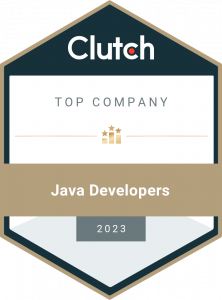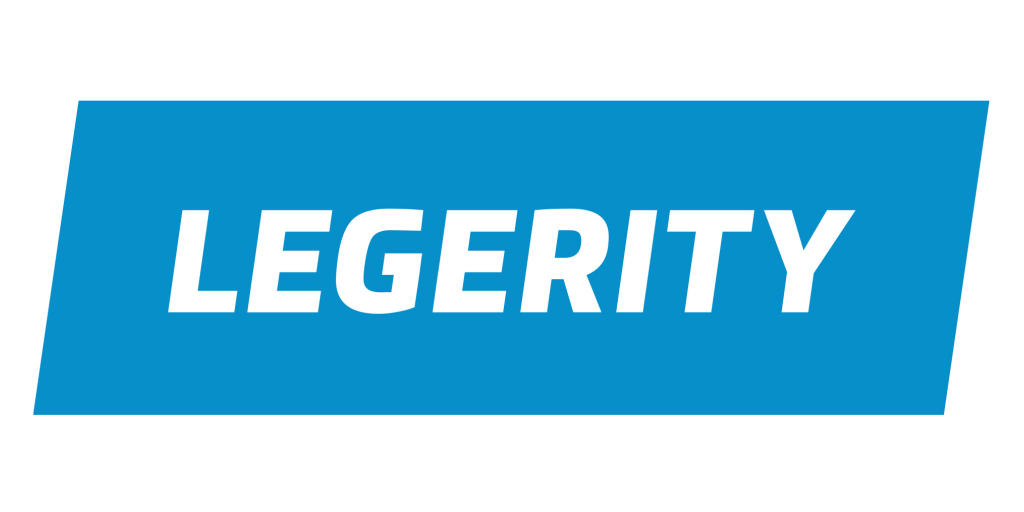Java Web Applications
Modern web applications based on Java backend.
Get first-class Java development services tailored to your needs. By applying our technical expertise in building high-performance systems, we'll help your business flourish in no time. We are the most trustworthy Java development team you'll find.

Join Global Technology Leaders
Recognized by





Java is indisputably the best choice for high-performance software development. Software built in Java is secure, scalable, and fast. You can create applications which stand out for their efficiency by working with our dedicated team. For ten years, we have been designing Java applications that are able to process a vast amount of data in a short time (one million queries per second!). Our Java software development services include highly technical solutions, maintenance services, and system integrations.
Stratoflow is one of Europe’s fastest growing custom Java development companies, recognized by Financial Times and Deloitte. As a close-knit team of top Java developers, we maintain long-term cooperations based on trust and great communication.
Our priority is to understand how things work and to keep our engineering souls happy with the software we build.
We care about your project. With us, your business processes speed up.

Stratoflow was instrumental in the completion of several projects of Tier 2. Other than developments, they also handled the technical support and maintenance of the applications. The team has been reliable, flexible and has displayed excellent technical capabilities in the workplace.
Modern web applications based on Java backend.
Bespoke digital solutions tailored to your business.
Complex data processing systems.
We build and extend SaaS applications for B2B and B2C.
We create high-performance custom Java products based on modern architecture.
Our systems are deployed in Amazon AWS, Azure, Google Cloud, Hetzner, Linode, and many others.
We extend your development teams with experienced Java developers.
Comprehensive system design, technology and source code audits in M&A processes and internal reviews.
Upgrade your existing Java solutions to modern standards in an incremental model.
Extend and support your current Java systems.
We offer migrations of any legacy application to Java.
Integration and data exchange systems based on MuleSoft, Apache Camel and Red Hat Fuse.

Java is a timeless and long-lasting technology. This mature yet constantly evolving programming language serves to develop software for desktops computers, enterprise servers, mobile devices as well as web browsers.
How is Java applied in software development? You can build everything: from ordinary web-based applications to advanced back-end systems, data processing engines and games, and various highly-scalable software solutions.
Java is an object-oriented programming language which makes complex problems easier to solve providing greater modularity. Java objects allow for the code to be reused, which simplifies testing as well as troubleshooting. But these are only a few of Java advantages.
Java still remains one of the most widely used programming languages thanks to many unique features and benefits, some of which are listed below.
Java is known as one of the most secure programming languages. Thanks to features such as: Java Virtual Machine (JVM), lack of pointers, secure APIs, bytecode execution, memory management, exception handling, cryptographic functions, you don’t have to worry about data leaks or injection attacks. With Java, your application will always be safe.
As the business grows, so does the IT infrastructure. Java offers a multitude of tools that enable building enterprise-grade software with scalability in mind. It supports modularity, static type checking, advanced analytics and debugging tools, as well as libraries that provide asymptotically optimal algorithms and data structures.
Custom software development is a complex journey that consists of many iterations. The speed of the entire development process depends on general project requirements, technical challenges, code quality, resources, framework, and last but not least, the programming language. In order to accelerate software development, Java is the best choice due to its advanced features that enable it to develop software in a faster and more efficient way.
Java has an automated memory management method, known as garbage collection. It can be executed on a JVM by automatically deleting objects that are no longer needed. What does it mean in practice? An increase of the speed and performance of your application.
A software designed in Java is able to process massive amounts of data, which makes it fast and reliable. This allows for an improved user experience, better lead conversion, thus providing a significant competitive advantage.
Java programming language is one of the most popular among developers. It means there will never be a problem finding experts. On the other hand, due to Java’s powerful features, it is chosen by world-class companies, such as Google, Airbnb, Meta, Uber, Spotify, Netflix to develop their software.
There is easy access to a number of frameworks and open-source libraries for every case. Along with a large and supportive Java community, finding the answer to any issue is effortless.
This feature applies to many aspects of Java software development. It is characterized by its user-friendly and flexible interface for Java developers, which, as a result, speeds up every development phase. Also, due to Java’s platform independence, a code written in Java can be moved from one device to another.
As a distributed language, Java allows developers to simultaneously use several data center nodes to minimize latency of applications. All this makes it possible to use a wide range of solutions when building advanced software.
Due to Java’s great capabilities and versatility, there are no limitations when it comes to custom software solutions of any size. Examples of using Java are: desktop GUI, cloud-based, or web applications, travel search engines, games, Big Data technology, IoT devices, advanced system integrations, e-commerce solutions.
Development costs with Java are significantly lower compared to other technologies. The reason is related to the time spent developing the software. What is more, applications written in Java are easier and cheaper to maintain.
Java, as a compiled language, is known for its efficiency as it compiles all the code at once. This prevents delays of execution time. Consequently, the use of energy is lower, which makes Java an environmentally friendly option. Nowadays, choosing energy efficient languages that can significantly minimize energy consumption is crucial.
Below you can see a comparison of the efficiency of the languages: Java, C, and Python.
| Elapsed Time (seconds) | |||
|---|---|---|---|
| Iteration | C | Java | Python |
| 1 | 196.83 | 85.81 | 2872.74 |
| 2 | 200.66 | 82.38 | 2681.26 |
| 3 | 199.15 | 83.02 | 2921.2 |
| 4 | 195.11 | 86.8 | 2945.17 |
| 5 | 198.68 | 85.05 | 2685.17 |
| Average | 196.083 | 84.612 | 2821.108 |
Based on these results, C is 2.34 times slower than Java and Python is 33.34 times slower than Java (source).
Business applications are in high demand these days. As a result, software developers continuously strive to create low latency systems with reaction times measured in microseconds. For this reason, if you choose Java, the problem of latency disappears.
For the past 20 years, our experts have been assisting companies from a wide range of industries in the process of digital transformation. We have delivered end-to-end custom software solutions that have brought our clients’ businesses to a higher level.
We have been involved in the fintech industry since the very beginning of our activity. We’ve managed to build a system processing more than 1 billion transactions per hour. Due to our great experience in the field of finance technology, you can be sure that your project will be in good hands. Our top-notch Java developers build financial systems of outstanding technical capabilities and support our customers during their entire technical journey.
By introducing cloud-based innovative architecture, the finance software we build in Java is secure, highly scalable, and able to process a massive amount of data in a very short time!
So, if you care about energy-efficient software development for your financial application – you’ve come to the right place!
The newest technological solutions have already become an indispensable part of the travel industry. We provide our clients with an advanced infrastructure which improves the scalability and performance of their travel platforms.
Using our expertise, we offer end-to-end services for travel search engines capable of handling 300 million queries daily and returning results in real-time.
The future of travel technology is here with us!
Our ecommerce software development services are dedicated to modern retail businesses of any size. We implement solutions tailored to your clients’ needs by leveraging the latest Java technologies that will accelerate and grow your ecommerce.
Understanding the operations and priorities that drive your ecommerce is our main focus when designing efficient, scalable and high-performance software.
We’ve had it tested – come see for yourself!
Let us enhance, upgrade and accelerate your healthcare IT solutions with our high-performance software. In Stratoflow, we are primarily guided by a thorough understanding of the complexity of your issue.
We do an in-depth analysis and select the best technologies that the healthcare industry needs, and do our best to guide you through the entire process.
Healthcare industry requires the newest technology. Let’s bring it in together.
Mobile-friendly, responsive interfaces (Angular, VueJS, Bootstrap)
Scalable in-memory processing systems (Hazelcast, Grid Gain, Oracle Coherence, ultrafast JVM solutions)
Modern, lightweight Java development with Spring Boot, Grail, Kotlin
PostgreSQL, Oracle Database, MySQL, ElasticSearch, Redis
MuleSoft, Apache Camel / Red Hat Fuse
Complete functional and non-functional testing coverage automated within the CI build process (Cucumber, JUnit, Selenium, JMeter)
Scalable architecture for heavy load processing Apache Kafka, RabbitMQ, ActiveMQ
Amazon AWS, Google Cloud, Microsoft Azure, dedicated hosting solutions
Agile development process with Jira, Slack, ClickUp
Stratoflow successfully customized the system according to the specific functionalities and without bugs reported. The team was commended for their adaptability in the work process and for their responsiveness.
Our process
Iterative approach with short feedback cycles and seamless communication is the key factor of success.
Our clients are located around the globe but we always try to start with a planning visit to learn more about the project details and build team rapport.
We work together on ballpark estimates and task priorities to build a roadmap maximizing business value.
We work in short development cycles with daily communication between developers and clients to make sure we end up with the best result.
Demonstration of the current progress enables to review the interim results.
Iterative approach is the best way to adjust the scope and direction.
We are your partner in a complete software development lifecycle, starting from analysis through development and testing, to data migrations, installation and maintenance.


When building high-performance systems, the following values always guide us.


Digital transformation with MuleSoft
Over one billion financial transactions processed in under one hour in the cloud
We build a continuous security monitor SaaS for ScanRepeat


The bespoke metal exchange platform works great, it is easily accessible and richly functional. Stratoflow managed deadlines capably, meticulously documented their progress, and delivered a complex project at an affordable cost.

Java is a widely popular general-purpose, object-oriented, class-based programming language with dynamic memory allocation and automated garbage collection. Java runs on Java Virtual Machine (JVM) that itself can run on many hardware architectures. Practically, Java is used to write stable applications of any kind and any size.
Java often hits the sweet spot when starting a new software development project because of the proven JVM virtual machine, wide selection of mature frameworks and libraries, and a large global talent pool.
Java and JVM are great for building web, mobile, and data processing systems. This is because of its interoperability, fast execution, static type checking, dynamic memory allocation, and modern extensions like Kotlin.
The key feature of Java is a proven track record of being a technology foundation for large, mission-critical systems.
What makes Java a fantastic choice for building a long-lasting application is the following:
Java can be run on any hardware architecture supported by JVM, but it may not be that fast as assembler or C optimized for a specific machine code.
Java is a very secure language due to three main reasons:
Spring Boot Framework is the most popular Java web development framework due to its variety of mature, built-in features that shorten time-to-market of your products.
When designing high-performance Java programs, it is important to follow the slowest processing unit principle to remove bottlenecks. Also, make sure to avoid:
Remember, your data fits in RAM. Check this article: Latency numbers every Java developer should know.
A design of a low latency Java system needs to follow similar principles as a high-performance architecture. We also need to remember that the key is to minimize our response/processing time per request. Reactive programming would become a handy processing model here. In this way, we are able to decouple unit operations and execute them as asynchronously as possible to minimize the response time and maximize the resource usage. Spring WebFlux available in Spring Boot Framework or Akka are mature Java frameworks that will help you introduce reactive programming models to your applications.
Yes, although Python is probably the best choice for prototyping due to large availability of different AI/ML algorithm implementations you may try. However, the numerical computation code in Java is at least 20-30 times faster compared with a direct implementation in Python. This results in a 20 times cheaper and smaller system that needs to be run in your production environment.
Yes, Java programming language is a fantastic option for software development due to its security, high-performance, mature set of proven frameworks and libraries, well-defined standards and a large global talent pool.
We strongly believe in extensive communication and transparency as the best options to mitigate project risks. This is why we apply an agile approach to all our projects (see our values: About Us). You may learn more about our development process here: How We Work.
Yes, we provide maintenance and extension support for Java applications of any kind. We have implemented many Java projects serving various industries, such as ecommerce, travel, fintech, and healthcare.
Java programming language is one of the most popular choice of modern companies who care about high-performance solutions. Starting a custom Java development project with us means a close collaboration with dedicated Java developers. As an experienced Java development company, Stratoflow follows an agile software development process. Read more: How is Java Used in Software Development: The Ultimate Guide.
Curious about why everyone chooses Java? Uncover the secrets behind Java's 2023 popularity.
Unlock data science potential with Java. Explore key features and frameworks for efficient analysis.
Discover the list of the best books for software engineers, for Java developers and best evergreen software engineering.
Submit the form to discuss your project and our software development, team augmentation and consultancy services. Our clients are located in the US, the UK, and Western Europe.
or call us: +1 415 340 8020 (US) or +44 20 3322 8684 (UK)
The features implemented have received overwhelmingly positive feedback from end-users. Stratoflow has an incredible technical expertise and a high degree of flexibility when it comes to changing project requirements.